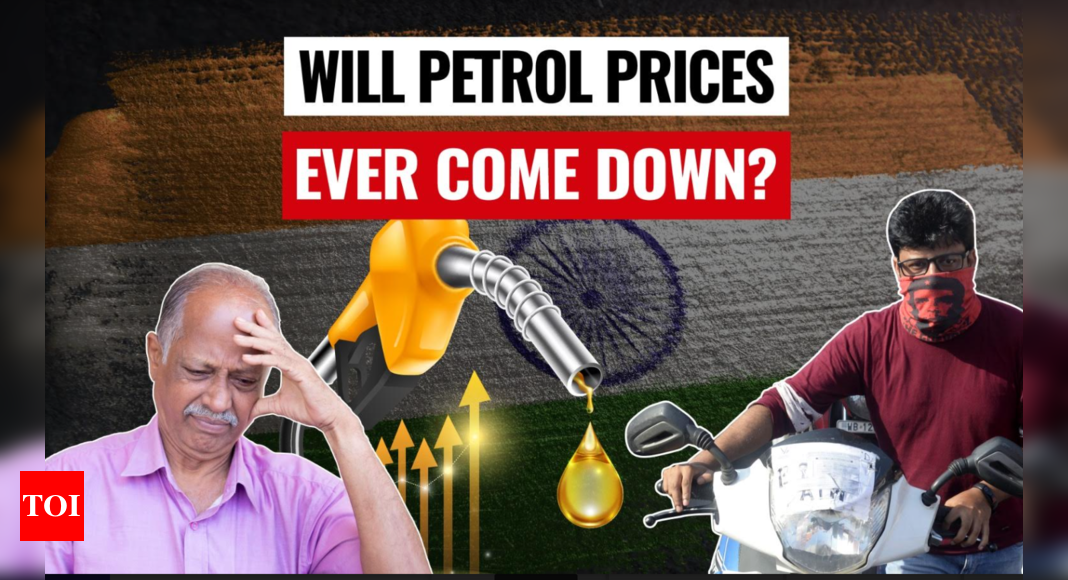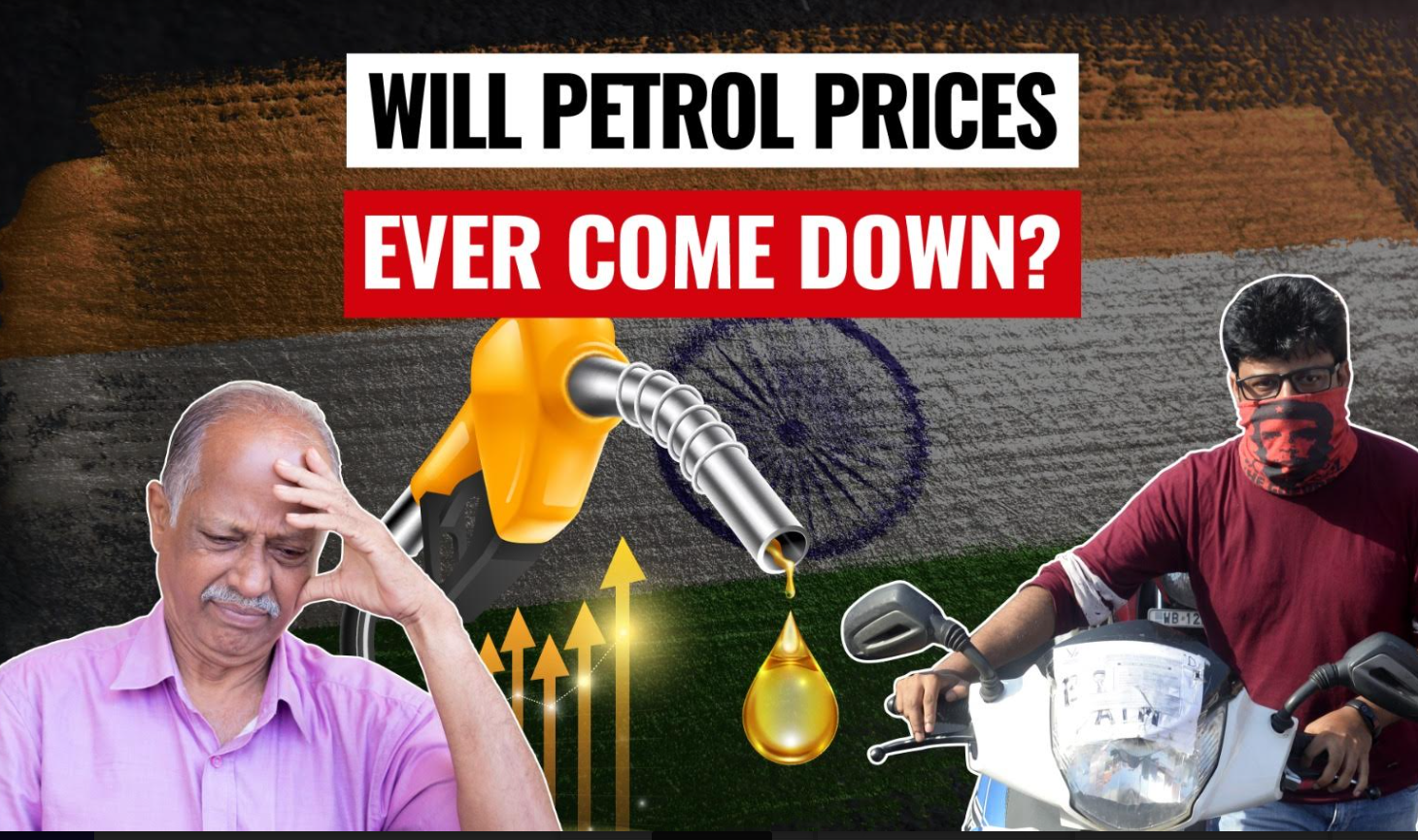These soaring gas prices remain high and keep rising despite India announcing that it is getting oil at a cheaper price from Russia.
What is the current context of gasoline prices in India? How is the petrol price calculated in the first place? And will Indians see any respite at petrol pumps anytime soon?
Why Are Petrol Prices Still So High in India? | When Will Fuel Prices Go Down? | Petrol Rise | TOI
Prior to the pandemic, in 2020, an owner of a two-wheeler was paying approximately INR 900/- for a full tank of fuel. Today that cost is around INR 1500/-.
To make things worse, petrol prices in India have been on the rise in recent months. According to the Ministry of Petroleum and Natural Gas, the average retail price of gasoline in India was Rs. 89 per litre in February 2023. This is a one rupee increase from the previous year, when the average retail price was Rs. 88 per litre.
Why is the price increasing at all?!
The factors driving this increase include a rise in international oil prices, fluctuations in the exchange rate between the Indian Rupee and the US Dollar, and changes in taxes and duties levied by the government. Refining costs also play a role in determining gasoline prices.
That’s a lot of complicated terms at once. What do all of them mean and how is the price of petrol determined?
The price of gasoline in India is determined primarily by 4 factors:
- International oil prices- this refers to the price of crude oil, which is the primary component of petrol. The price of crude oil is influenced by global supply and demand, geopolitical tensions like the Russia-Ukraine conflict, and changes in the market due to the ongoing COVID-19 pandemic.
- The exchange rate between the Indian Rupee and the US Dollar also affects the price of gasoline in India as oil is priced in US dollars. At present, a weaker Rupee is increasing the cost of importing oil into India, leading to higher gasoline prices.
Here’s an example. Suppose you go to the mall and spend INR 5000/- on shopping. Your total expense for the day is not just 5000 rupees. Keep in mind your uber also cost you INR 200/- to get to the mall and to come back home. In actuality, your total expenditure for the day was INR 5400/-.
- Refining costs also play a role in determining gasoline prices. The cost of refining crude oil into gasoline can be impacted by changes in the cost of raw materials, labor, and energy.
- Taxes levied by the Indian government also have a significant impact on the retail price of gasoline in India. Taxes and duties account for more than 50% of the retail price of gasoline in the country. This means if your petrol bill is 1000 rupees, over 500 rupees are because of taxes and duties.
Why such high taxes in India?
It’s easy to blame the government for not reducing the tax on petrol.
In fact, those who are criticizing the current government seem to forget the fact that during the previous UPA government which was in power from 2004-2014, taxes on petroleum were high and the UPA government raised the tax not once, but several times to help meet its fiscal targets.
The reality is, that no matter who is in power in India right now……the petrol prices would be high in India because the price of crude oil is also significantly high. And also, because the decision to reduce taxes on gasoline, including petrol, is a complex one that requires careful consideration of several factors.
For starters, the Indian government collects taxes on gasoline to generate revenue that is used to fund various public services and infrastructure projects. The current Modi government has made infrastructure development a top priority and has invested hundreds of billions of dollars to finally get much needed modern infrastructure into India.
One example is the Sagarmala project, which focuses on port-led development. This is estimated to cost over $120 billion USD.
The Pradhan Mantri Gram Sadak Yojana, which aims to connect all unconnected habitations in rural areas with all-weather roads, is another large infrastructure project that has been undertaken by the government and is estimated to cost several billion dollars.
Another example is the Pradhan Mantri Gram Sadak Yojana, which aims to connect all unconnected habitations in rural areas with all-weather roads. According to estimates, the cost for this is several billion dollars.
This is where the heavy tax we pay on petrol is going. Additionally, in recent years, the Indian government has faced rising fiscal deficits, which have put pressure on public finances. The COVID19 pandemic has also made it difficult to reduce taxes on gasoline, as the government may rely on this source of revenue to meet its financial obligations.
Ultimately, the Indian government will have to weigh these considerations and make a decision that is in the best interests of the country and its citizens.
Is there any relief in sight for Indians at petrol pumps?
Despite getting cheap oil from Russia, high taxes, refining costs, exchange rate, distribution and transportation costs, and government subsidies contribute to high petrol prices in India.
And it’s not just India that is facing high petrol prices.
America’s price of gasoline is calculated in the same way as India. According to the US Energy Information Administration, the average retail price of gasoline in the United States was $3.02 per gallon on 10th February 2023.
Like India, in Europe, taxes play a major role in determining gasoline prices. The European Union has a harmonized tax system for gasoline, meaning that the tax rate is similar across all member countries. However, each country also has its own national tax rate, which can impact the overall price of gasoline.
In Germany, for example, the average retail price of gasoline was €1.64 per litre as of February 10, 2023.
In China, the price of gasoline is set by the government and can change depending on changes in international oil prices. The price of gasoline in China is influenced by the same factors as India, including international oil prices, taxes, refining costs, and the exchange rate between the Chinese yuan and other currencies.
According to the National Bureau of Statistics of China, the average retail price of gasoline in China was ¥7.00 per litre on February 10, 2023. At this point, even if the tax is taken out completely, gas prices will still be relatively high as compared to 2020 in India.
Put simply, it is unrealistic to expect dramatically lower petrol prices in the near future.
The silver lining though is that India has been exploring domestic oil production, with oilfields located in the states of Assam, Gujarat, and offshore in the Bay of Bengal. This could be a promising start to lessen our dependence on international oil which would make India less vulnerable to the volatile price fluctuations we are experiencing right now.
What can be said for sure, is that as the Russia-Ukraine crisis becomes less hot-blooded, as the global economy stabilizes as does international crude prices AND the COVID-19 pandemic reaches an end, as the oil market will become less volatile as a result, disruptions will decrease as will the price of petrol.

